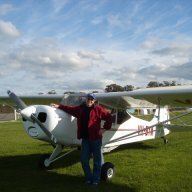Hi DWF. I'm glad you guys are ok after those devastating fires.
Yes, you are right...I had it back the front which was really stupid having talked about the uniform distances between degrees of latitude. Age!
As I'm sure you know, sun shots (yes, the stars can be used too but I'm a mug) were taken at midday and the difference in latitude made by a few of minutes of time was not of great consequence. The chronometer is much more important for getting longitudinal position because the calculation relies on the fact that the Earth's speed of rotation on its longitudinal axis is pretty much constant and, as it rotates through 360 degrees in 24 hours it will move through 15 degrees in just one hour. Knowing the local time (midday) and an accurate GMT allowed a calculation of the time difference and hence the longitude.
The other reason they bumped into the coast was sheer pigheadedness! Their egos were stroked when they made fast times and they hated to have to reduce sail at night even when they knew they didn't have far to go. The southern coastline was a bit of a trap being crescent shaped and with Tassie hanging there in the way as well if they were going on to Sydney Town.
The obstinacy of sea captains in those times is legendary. It was a fairly calm clear day in Port Phillip on 19 November 1865 when the City of Launceston departed Melbourne for the Heads via the West Channel. She was a steam-sail vessel under the command of Captain William Thom. She was destined for Launceston with a cargo of sundries, incl. brandy, port, rum, cigars, tea and boots and carrying sail as well as using her engines.
The ss Penola, a steel-hulled steamship somewhat larger than the CoL, had like wise departed Geelong and was steaming down channel to the intersection with the West Channel which both vessels approached at the same time. Their respective captains had a heated exchange regarding who had right of way, the Penola being on the right and the CoL having sails hoisted (but also steaming) (bit like the who's runway argument, isn't it?). The invective and intransigence of the two captains was only exceeded by their joint stupidity and the Penola neatly removed the first 20 feet or so of the CoL's bows causing the latter to sink.
Fortunately, the calm conditions and proximity to help ensured that no hands or passengers were lost. The CoL settled upright with the tops of her masts showing a couple of miles off Port Arlington. But that's not the end of the saga.
The CoL was carrying mail and quite a few valuables and attempts were put in train to have them recovered by putting salvage out to tender. McKay of Sunshine Harvester fame develope and patented his special lifting apparatus comprising a number of large leather bags attached to cables with each containing a rudimentary Kipp's apparatus....a container of hydrochloride acid and Zinc filings. He chartered the tender, Eleutheria and took her out to the wreck site. His divers went down and attached the various cables and tipped the canisters so that the acid and zinc filings were mixed. Large volumes of hydrogen gas were evolved, the leather bags filled, and with a quiet gurgle as the suction with the mud was broken, the CoL rose rather majestically to the surface.
The Eleutheria was brought hard alongside and her lines shortened.
Then one by one the leather bags tipped over, spilling their contents and the CoL returned to the bottom taking the tender with her!
I was working in the Maritime Heritage Unit when the site of the CoL was rediscovered in the mid 1990's and some quite amazing artefacts recovered for conservation.
Kaz












